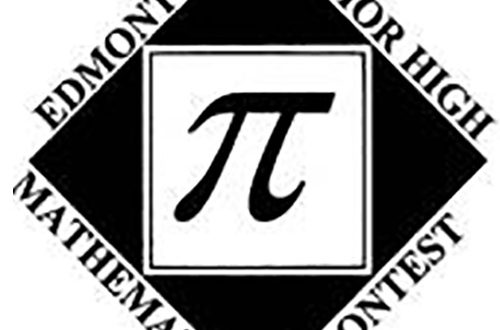Journal of the Mathematics Council of the Alberta Teachers’ Association
Volume 38 Issue 2, May 2001
Curriculum development for mathematics and, subsequently, the teaching,
learning and assessment of school mathematics have been guided over the past decade in Alberta by three important National Council of Teachers of Mathematics (NCTM) publications:
- Curriculum and Evaluation Standards for School Mathematics (NCTM 1989)
- Professional Standards for Teaching Mathematics (NCTM 1991)
- Assessment Standards for School Mathematics (NCTM 1995)
The first document, Curriculum and Evaluation Standards for School Mathematics (NCTM 1989), was an attempt by a professional organization to articulate clearly defined standards for teachers and curriculum developers. This document revolutionized how mathematics curricula were to be written. The standards documents outline clearly stated goals and content areas for the grade bands, but they were also designed to challenge the assumption that mathematics is only for the select few. These documents articulate the view that all students should gain mathematical power-that is, the ability to explore, conjecture and reason logically, as well as the ability to effectively use a variety of mathematical methods to solve nonroutine problems.
The standards documents advocate the use of manipulatives, but they do not suggest that manipulatives are the only tools used to teach concepts. They suggest that students should have adequate procedural facility and encourage calculator use but not at the expense of mental math skills or number sense.
The original standards documents intended to provide guidance and a vision of the teaching and learning of mathematics. However, with such an enormously wide range of classroom practices and interpretations in place-all claiming to follow the standards-the documents often received fairly negative comments from the public sector, which was determined to identify the culprit responsible for our poor performances in mathematics.
In April 2000, with the benefit of 10 years’ hindsight and the knowledge that the original standards were not entirely understood by everyone, the NCTM released an updated document entitled Principles and Standards for School Mathematics (PSSM). PSSM outlines six principles and ten standards for school mathematics and organizes the standards across four grade-level bands-Grades K-2, Grades 3-5, Grades 6—8 and Grades 9 -12.
The six principles for school mathematics are as follows:
- The Equity Principle-Effective mathematics education requires equity-high expectations and strong support for all students.
- The Curriculum Principle-A curriculum is more than a collection of activities: it must be coherent, focused on important mathematics and well articulated across the grades.
- The Teaching Principle-Effective mathematics teaching requires understanding what students know and need to learn and then challenging and supporting them to learn it well.
- The Learning Principle-Students must learn with understanding, actively building new knowledge from experience and prior knowledge.
- The Assessment Principle-Assessment should support the learning of important mathematics and furnish useful information to both teachers and students.
- The Technology Principle-Technology is essential in teaching and learning mathematics; it influences the mathematics that is taught and enhances students’ learning.
The 10 standards for school mathematics are as follows:
- Number and Operation
- Algebra
- Geometry
- Measurement
- Data Analysis and Probability
- Problem Solving
- Reasoning and Proof
- Communication
- Connections
- Representation
PSSM discusses each standard in some detail and suggests how it can be implemented across the four grade-level bands.
As teachers contemplate how to put these principles and standards into practice, they may appreciate knowing that various support structures and resources are available. For example, the electronic edition of PSSM (with additional examples and resources) is available at Illuminations (illuminations.nctm.org). This website provides opportunities to see how NCTM’s principles and standards can work in the classroom. It is also an excellent tool for developing new teaching strategies and enhancing professional growth. Once you launch Illuminations, you also have access to the hallmark of the site, i-Math Investigations, which are Internet-based activities for all grade bands. Other features of the site include teacher-oriented Reflections on Teaching, professional development activities for teachers based on online video vignettes; Selected Web Resources, which includes links to sites that have been reviewed by an expert panel; and Internet-Based Lesson Plans, which shows how Internet links can be used to create effective standard-based mathematics lessons. Other features are constantly being added.
If the principles and standards articulated in PSSM are to be implemented, mathematics teachers must first become familiar with them. We also need to remember that the principles and standards are rooted in research, meaning that they reflect the best and most comprehensive view of what effective teaching and learning of mathematics are all about.
I encourage mathematics teachers to participate in professional organizations (for example, MCATA and NCTM) and in other professional growth opportunities to gain a solid understanding of the principles and standards so that they may be practised in all classrooms across the province.
References
National Council of Teachers of Mathematics (NCTM). Curriculum and Evaluation Standards for School Mathematics. Reston, Va.: NCTM, 1989.
— Professional Standards for Teaching Mathematics. Reston, Va.: NCTM, 1991.
— Assessment Standards for School Mathematics. Reston, Va.: NCTM, 1995.
— Principles and Standards for School Mathematics. Res ton, Va.: NCTM, 2000.
Klaus Puhlmann
1 – 3
4 – 5
Klaus Puhlmann
6
Sandra Unrau
7 – 8
Shauna Boyce
9 – 11
Finding Your Inner Mathematician
Keith Devlin
12 – 13
An Example of an Error-Correcting Code
Mark Rabenstein
14 – 15
NCTM Standards in Action Process Standard: Connections
Klaus Puhlmann
16 – 21
Making Connections: A Thematic Mathematics Project for Grade 7
David B. Smith
22 – 26
Cost Allocation: An Application of Fair Division
Albert Goetz
27 – 33
Random Variables: Simulations and Surprising Connections
Robert J. Quinn and Stephen Tomlinson
34
Art Jorgensen
35 -43
Is There a Worldwide Mathematics Curriculum?
Zalman Usiskin
44 – 46
Patterns and Patterning: Myths and Not Myths
Jerry Ameis
47 -48
Connecting Probability and Geometric Progressions
David R. Duncan and Bonnie H. Litwiller
49 – 50
Sandra M. Pulver
51 – 53
Frank Drysdale and Brian McGuiness
54
Ages of John’s Three Daughters
Klaus Puhlmann
55
Unsolvable Problems: Trisection of an Angle
Klaus Puhlmann
56



